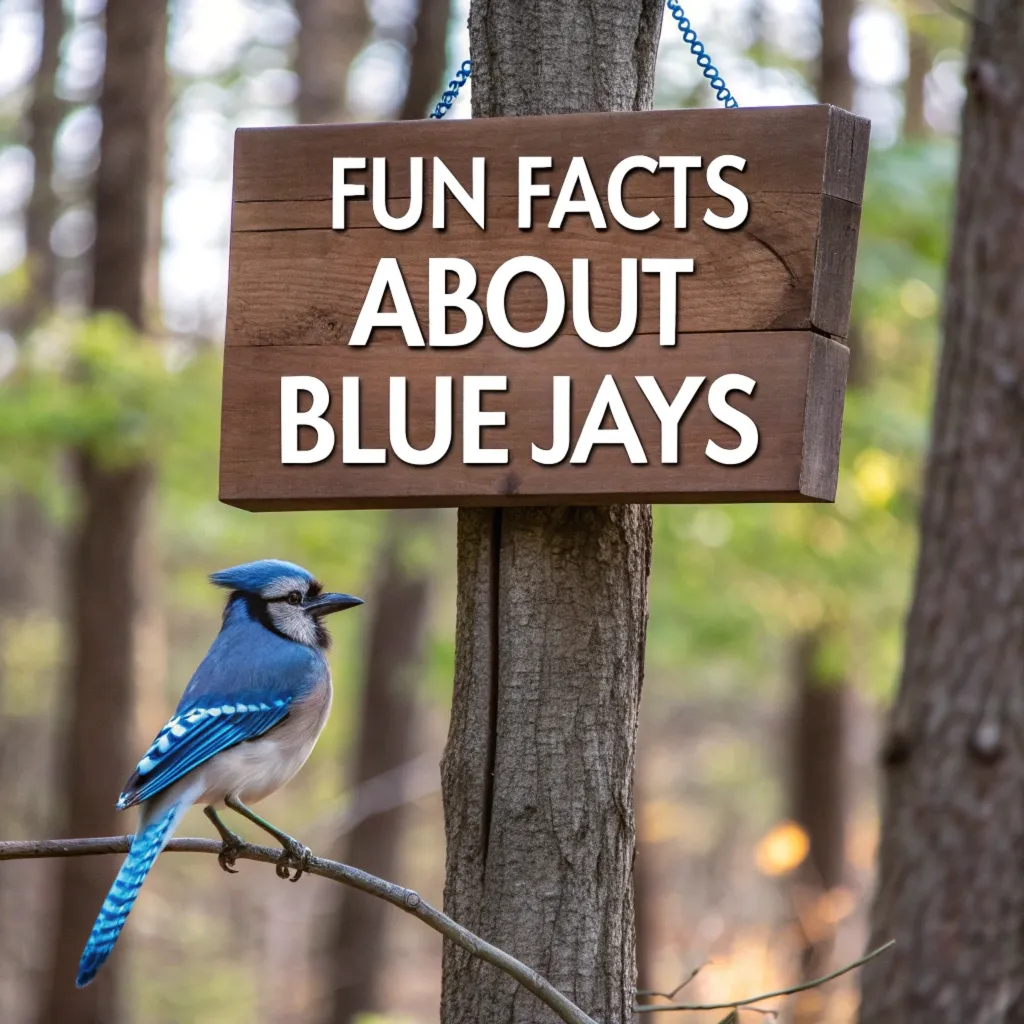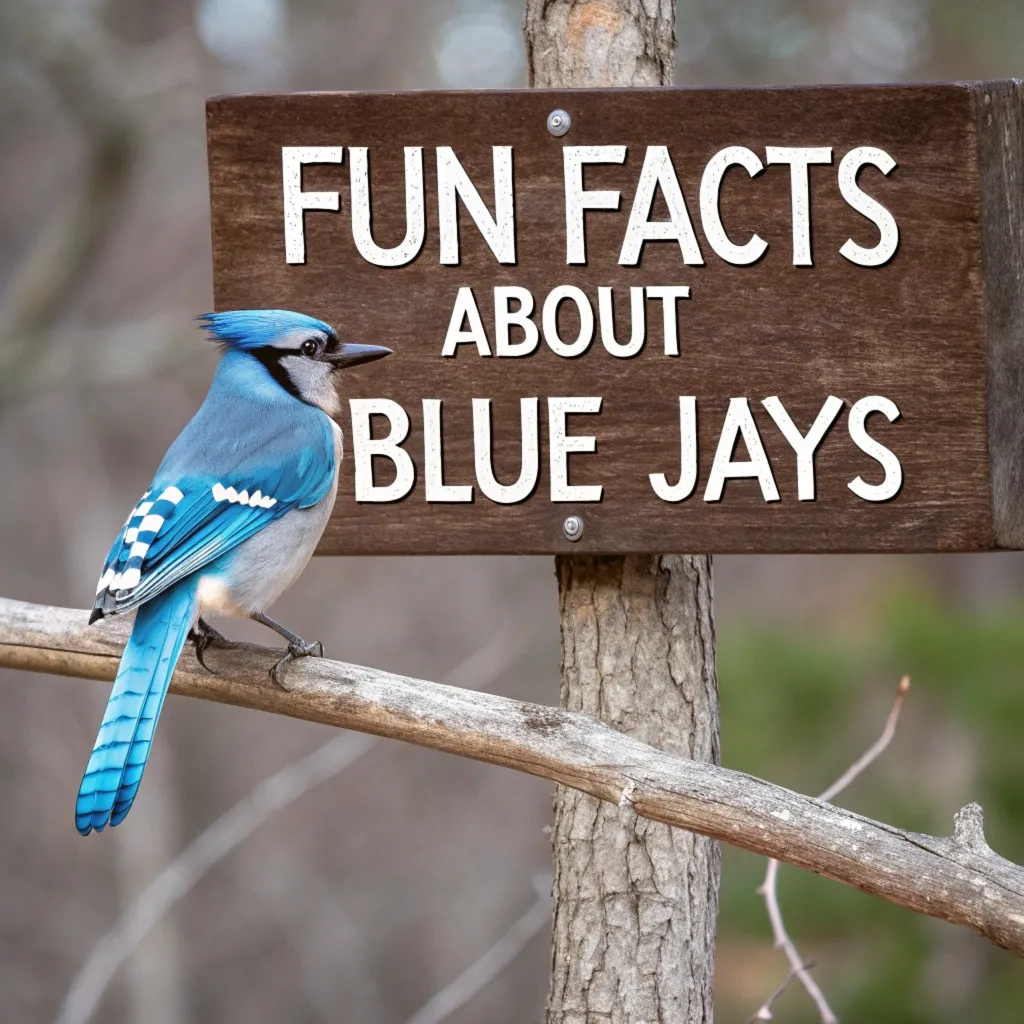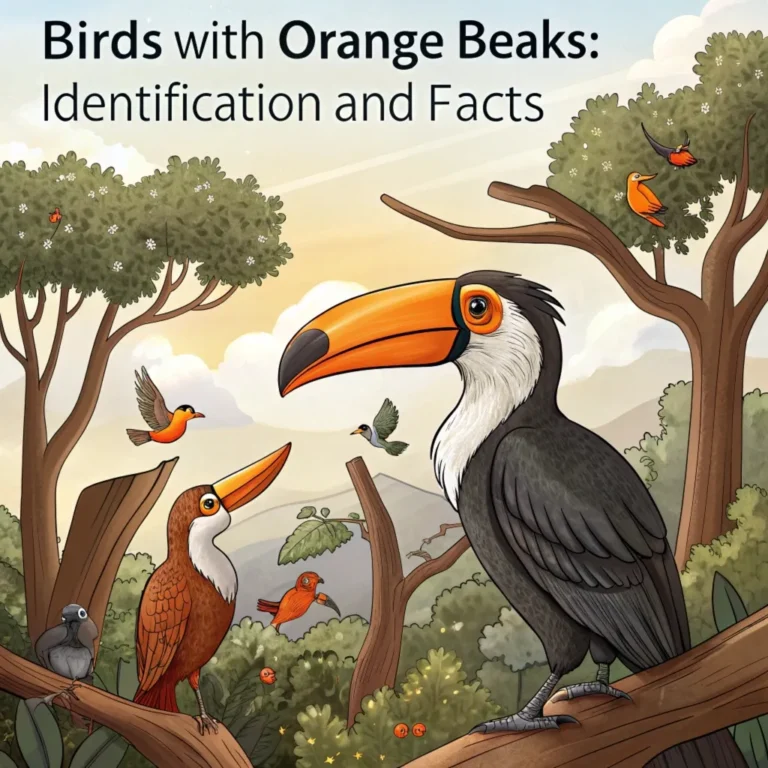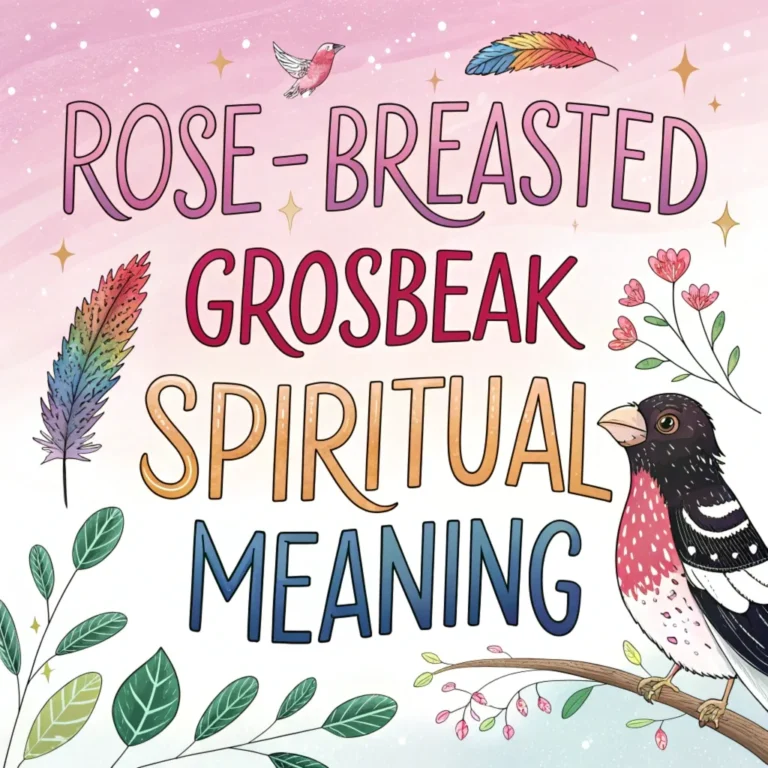10 Fun Facts About Blue Jays: The Colorful and Intelligent Bird
Blue jays are striking birds that captivate with their vibrant plumage and intelligent behavior.
These fascinating creatures play important roles in their ecosystems while displaying remarkable cognitive abilities.
Let’s explore some intriguing facts about blue jays that showcase their unique characteristics and ecological significance.

Key Takeaways
- Appearance: Blue jays have vibrant blue, white, and black plumage, with their blue coloration resulting from light refraction rather than pigmentation
- Intelligence: They belong to the Corvidae family, known for high intelligence, and can use tools, solve problems, and mimic various sounds
- Ecological role: Blue jays act as important seed dispersers, particularly for oak trees, and help control insect populations
- Social behavior: These birds form strong social bonds, communicate through diverse vocalizations, and work together to protect against predators
- Adaptability: Blue jays thrive in various habitats, from woodlands to urban areas, showcasing their resilience and adaptability
- Diet: They are omnivores with a varied diet including nuts, seeds, insects, and occasionally small vertebrates
- Nesting: Blue jays build nests in tree crotches and are protective parents, fiercely defending their young
- Migration: Some blue jays migrate while others remain in their breeding range, exhibiting partial migration patterns
- Lifespan: Blue jays can live longer than many other bird species, with the oldest recorded individual reaching nearly 27 years
- Conservation: While currently classified as a species of “Least Concern,” blue jays face challenges from habitat loss and climate change
Blue jays are remarkable birds that have captured the attention of birdwatchers and researchers alike.
Their striking appearance and complex behaviors make them a fascinating subject of study.
As we delve deeper into the world of blue jays, we’ll uncover the many ways these intelligent birds have adapted to thrive in diverse environments and their significant impact on ecosystems.
Vibrant Plumage and Unique Coloration
Blue jays boast a striking appearance with their vibrant blue, white, and black feathers. The blue coloration that gives these birds their name is not due to pigmentation but results from the internal structure of their feathers refracting light.
This optical illusion creates the vivid blue hue we observe, making blue jays a true marvel of nature’s design.
The intricate feather structure of blue jays is a testament to the complexity of avian evolution. Their vibrant plumage serves multiple purposes, from attracting mates to providing camouflage in certain lighting conditions.
The blue jay’s appearance is not just about aesthetics; it’s a functional adaptation that has contributed to their success as a species.
Blue jays’ unique coloration has inspired artists and nature enthusiasts for centuries. Their vivid blue feathers have become iconic in North American wildlife imagery.
Intelligence and Problem-Solving Abilities

As members of the Corvidae family, blue jays possess remarkable cognitive abilities. These intelligent birds can use tools, solve problems, and exhibit complex behaviors.
In captivity, blue jays have been observed using bits of newspaper or sticks to bring food closer, demonstrating their problem-solving skills and adaptability.
The cognitive prowess of blue jays extends beyond simple tool use. They have demonstrated the ability to plan for the future, recognize themselves in mirrors, and even understand cause-and-effect relationships.
These skills place blue jays among the most intelligent birds in North America, rivaling the problem-solving abilities of their corvid cousins, crows and ravens.
Blue jays’ intelligence allows them to adapt quickly to changing environments, contributing to their success in various habitats.
Vocal Mimicry and Communication
Blue jays are known for their diverse vocalizations and impressive mimicry skills. They can imitate the calls of other birds, including hawks, and even replicate human-made sounds like car alarms.
This ability serves multiple purposes, from communication within their social groups to deterring predators and confusing other bird species.
The vocal repertoire of blue jays is extensive and includes a wide range of calls, from harsh screams to soft, melodious whistles.
Their ability to mimic other species’ calls is not just a party trick; it’s a sophisticated communication strategy that helps them navigate complex social and ecological interactions.
Blue jays use their vocal abilities to convey different messages, from warning calls to mating songs, showcasing their complex social structure.
Ecological Importance as Seed Dispersers

One of the most significant roles blue jays play in their ecosystems is that of seed dispersers. They have a particular affinity for acorns and other nuts, often caching them for later consumption.
This behavior inadvertently leads to the planting of new trees, as many cached seeds are forgotten and left to germinate. A single blue jay can plant thousands of acorns in a season, contributing significantly to forest regeneration.
The seed dispersal activities of blue jays have far-reaching ecological impacts. By transporting seeds to new areas, they help maintain genetic diversity in plant populations and contribute to the expansion of forest ecosystems.
This role is particularly crucial in areas affected by deforestation or natural disasters, where blue jays can help jumpstart the process of reforestation.
Blue jays’ forgetfulness in retrieving cached seeds is a boon for forest ecosystems, as it leads to the natural planting of new trees.
Social Behavior and Cooperative Defense
Blue jays exhibit strong social bonds and complex social structures. They often form family groups and communicate through a wide array of calls that convey different messages.
When faced with threats, blue jays engage in cooperative behaviors such as mobbing, where a group will work together to drive off predators much larger than themselves.
The social intelligence of blue jays is evident in their cooperative defense strategies. By working together, they can effectively protect their nests and young from a variety of predators.
This behavior not only benefits individual blue jays but also contributes to the overall survival and success of their populations.
Blue jays’ cooperative nature extends beyond defense, influencing their foraging and breeding behaviors as well.
Adaptability to Various Habitats
These resilient birds have shown remarkable adaptability to different environments. Blue jays can thrive in various habitats, from woodlands to urban areas, showcasing their ability to adjust to changing landscapes.
This adaptability has contributed to their stable population numbers despite challenges like habitat loss and climate change.
The versatility of blue jays is evident in their ability to exploit a wide range of food sources and nesting sites.
In urban environments, they have learned to take advantage of human-provided food sources, such as bird feeders, while still maintaining their natural foraging behaviors.
This adaptability allows blue jays to serve as a bridge species between wild and urban ecosystems.
Blue jays’ success in diverse habitats demonstrates their ecological flexibility and resilience in the face of environmental changes.
Diverse Diet and Feeding Habits
Blue jays are omnivores with a varied diet that includes nuts, seeds, fruits, insects, and occasionally small vertebrates. Their feeding habits play a role in controlling insect populations, benefiting both forest ecosystems and agricultural areas.
Blue jays also exhibit food caching behavior, storing acorns and other food items for future consumption.
The dietary flexibility of blue jays contributes to their success as a species. By consuming a wide variety of foods, they can adapt to seasonal changes in food availability and thrive in different habitats.
Their role in insect control is particularly beneficial, as they help maintain ecological balance by keeping pest populations in check.
Blue jays’ foraging behaviors have significant ecological impacts, influencing plant dispersal and insect populations in their habitats.
Nesting Behavior and Parental Care
When it comes to nesting, blue jays display strong parental instincts. Both male and female birds participate in nest construction, typically placing their nests in the crotches of trees.
Blue jays are fiercely protective of their nests and young, often attacking much larger predators to defend their territory and offspring.
The collaborative approach to nesting and parental care exhibited by blue jays reflects their complex social structure. Both parents invest heavily in raising their young, from incubating eggs to feeding and protecting nestlings.
This shared responsibility increases the chances of survival for their offspring and strengthens the pair bond between mates.
Blue jays’ dedication to their young extends beyond the nesting period, with family groups often staying together for several months after fledging.
Mysterious Migration Patterns
Blue jays exhibit partial migration patterns, with some individuals migrating south for the winter while others remain in their breeding range year-round.
The reasons behind these varied migration habits are not fully understood, adding an element of mystery to blue jay behavior and ecology.
The complex migration patterns of blue jays have puzzled researchers for years. Factors such as age, food availability, and local climate conditions may influence an individual bird’s decision to migrate or stay put.
This flexibility in migration behavior allows blue jay populations to adapt to changing environmental conditions and maintain their presence across a wide geographic range.
Blue jays’ migration habits provide valuable insights into how birds respond to environmental cues and adapt to changing climatic conditions.
Longevity and Conservation Status
Compared to many other bird species, blue jays generally have longer lifespans. The oldest recorded blue jay lived for nearly 27 years, showcasing the potential longevity of these birds.
While currently classified as a species of “Least Concern” by the International Union for Conservation of Nature (IUCN), blue jays face ongoing challenges from habitat loss, urbanization, and climate change.
The relative longevity of blue jays contributes to their population stability and allows for the accumulation of learned behaviors that can be passed on to younger generations.
However, like many bird species, they face threats from human activities and environmental changes. Conservation efforts focused on preserving diverse habitats and maintaining healthy ecosystems are crucial for ensuring the continued success of blue jay populations.
Blue jays’ adaptability has helped them maintain stable populations, but ongoing conservation efforts are essential to protect their habitats and ensure their long-term survival.
Frequently Asked Questions
How can I attract blue jays to my backyard?
To attract blue jays, provide feeders with peanuts, sunflower seeds, and suet. Plant oak trees and native berry bushes in your yard. Offer a water source like a birdbath.
Are blue jays aggressive towards other birds?
Blue jays can be assertive at feeders, but their behavior helps protect smaller birds from predators. Their alarm calls alert other species to potential dangers.
Do blue jays mate for life?
Blue jays typically form monogamous pairs and often stay together for multiple breeding seasons, though not necessarily for life.
How can I tell male and female blue jays apart?
Male and female blue jays look very similar, making visual identification challenging. Behavioral cues during breeding season may help distinguish between sexes.
What is the significance of a blue jay’s crest?
The crest on a blue jay’s head is used for communication. A raised crest can indicate aggression or alertness, while a flattened crest suggests a relaxed state.

Joyce is the passionate founder of Chirping Hearts, a website dedicated to sharing her love for birds and providing valuable information about avian life. With a background in ornithology and years of experience in birdwatching, Joyce aims to inspire others to appreciate the beauty and diversity of birds. Through her engaging articles and guides, she hopes to foster a community of bird enthusiasts who share her enthusiasm for these incredible creatures. When she’s not writing, Joyce enjoys exploring nature trails and observing birds in their natural habitats.







